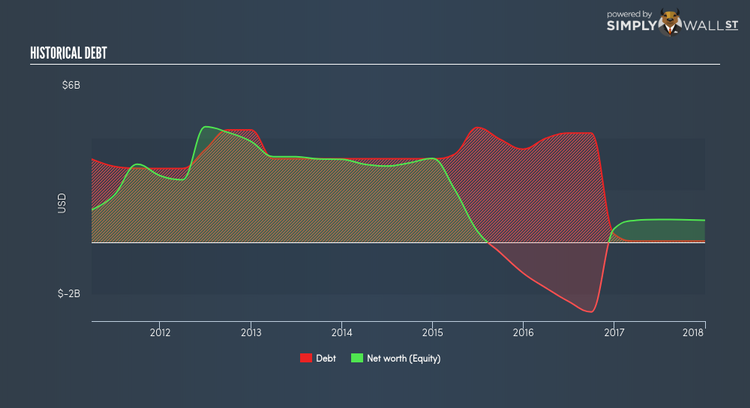What You Must Know About SandRidge Energy Inc’s (NYSE:SD) Return on Equity

SandRidge Energy Inc (NYSE:SD) generated a below-average return on equity of 5.60% in the past 12 months, while its industry returned 10.69%. Though SD’s recent performance is underwhelming, it is useful to understand what ROE is made up of and how it should be interpreted. Knowing these components can change your views on SD’s below-average returns. I will take you through how metrics such as financial leverage impact ROE which may affect the overall sustainability of SD’s returns. Check out our latest analysis for SandRidge Energy
Peeling the layers of ROE – trisecting a company’s profitability
Return on Equity (ROE) weighs SandRidge Energy’s profit against the level of its shareholders’ equity. An ROE of 5.60% implies $0.06 returned on every $1 invested. While a higher ROE is preferred in most cases, there are several other factors we should consider before drawing any conclusions.
Return on Equity = Net Profit ÷ Shareholders Equity
Returns are usually compared to costs to measure the efficiency of capital. SandRidge Energy’s cost of equity is 8.75%. This means SandRidge Energy’s returns actually do not cover its own cost of equity, with a discrepancy of -3.15%. This isn’t sustainable as it implies, very simply, that the company pays more for its capital than what it generates in return. ROE can be dissected into three distinct ratios: net profit margin, asset turnover, and financial leverage. This is called the Dupont Formula:
Dupont Formula
ROE = profit margin × asset turnover × financial leverage
ROE = (annual net profit ÷ sales) × (sales ÷ assets) × (assets ÷ shareholders’ equity)
ROE = annual net profit ÷ shareholders’ equity
Basically, profit margin measures how much of revenue trickles down into earnings which illustrates how efficient the business is with its cost management. The other component, asset turnover, illustrates how much revenue SandRidge Energy can make from its asset base. And finally, financial leverage is simply how much of assets are funded by equity, which exhibits how sustainable the company’s capital structure is. Since financial leverage can artificially inflate ROE, we need to look at how much debt SandRidge Energy currently has. Currently the debt-to-equity ratio stands at a low 4.47%, which means SandRidge Energy still has headroom to take on more leverage in order to increase profits.
Next Steps:
ROE is a simple yet informative ratio, illustrating the various components that each measure the quality of the overall stock. SandRidge Energy’s below-industry ROE is disappointing, furthermore, its returns were not even high enough to cover its own cost of equity. However, ROE is not likely to be inflated by excessive debt funding, giving shareholders more conviction in the sustainability of returns, which has headroom to increase further. Although ROE can be a useful metric, it is only a small part of diligent research.
For SandRidge Energy, I’ve put together three essential aspects you should further research:
Financial Health: Does it have a healthy balance sheet? Take a look at our free balance sheet analysis with six simple checks on key factors like leverage and risk.
Management:Have insiders been ramping up their shares to take advantage of the market’s sentiment for SandRidge Energy’s future outlook? Check out our management and board analysis with insights on CEO compensation and governance factors.
Other High-Growth Alternatives : Are there other high-growth stocks you could be holding instead of SandRidge Energy? Explore our interactive list of stocks with large growth potential to get an idea of what else is out there you may be missing!
To help readers see pass the short term volatility of the financial market, we aim to bring you a long-term focused research analysis purely driven by fundamental data. Note that our analysis does not factor in the latest price sensitive company announcements.
The author is an independent contributor and at the time of publication had no position in the stocks mentioned.


